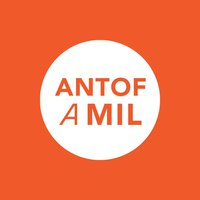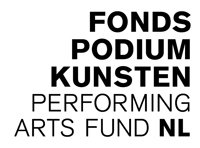Videoinstalación
Concept: Dries Verhoeven | Produced by: Studio Dries Verhoeven | Video recording: Thorsten Alofs and Christopher Hewitt.
Dries Verhoeven
Director
Looking out for art
A theater creator and visual artist in equal measure, he works on installations and performances in museums and in public, bringing into contention the relationship between the spectator, performers, everyday reality and art. With around 20 plays to his name, he has become a key figure in video installations and events in The Netherlands and Europe, winning the prize for Best International Performance at the Tehran Theater Festival, for example. Based in Berlin, he’s been a member of the Akademie van Kunsten - part of the German Society of Arts - since 2020.
“Guilty Landscapes brings ambivalence and anxiety, curiosity and empathy, smiles and sorrow, shock and indifference”.
—It’s ‘interactive’ - not didactic - art. The installation subtly envelopes the audience, making them interact with the stories’ protagonists, who only deserve compassion as part of the everyday international news.
—Although it seems to be visual art, it’s also performing art. In the words of its creator in an interview with the Spanish supplement El Cultural, “I’m not interested in the theatrical representation of real life. Sometimes, this portrayal, with all its theatrical props, doesn’t allow for any real communication between the actor and the spectator. My quest is based on creating installations and/or spaces where the spectator feels that their physical presence is both a necessary and indispensable condition for the piece’s development”.
—At the end of the show, the audience is given a leaflet with part of the essay Sobre el dolor de los demás by Susan Sontag (2003) printed on it, including reflections on history and the effect of images of war. “Not every reaction to these images is governed by reason or conscience. A large number of these representations of tormented and mutilated bodies actually provoke a lascivious kind of pleasure”.
—Performance: An avant-garde art form in which the play’s medium is the artist’s body and the play itself is made up of the actions this carries out, normally combined with multiple other elements such as the visual arts, music, dance and theater. It’s one of the art forms that transformed art in the middle of the twentieth century.
—Video installation: A kind of video art that uses video as a central component and that relates video images to other objects and materials occupying a specific place. In this case, the video image, given its shape and form, overflows the limited frame of a screen and is not conditioned by or related to the television as a means of communication.
—Find out more about Dries Verhoeven’s work on his Vimeo channel.
—Dries Verhoeven talks about the play during his exhibition at the Santarcangelo Festival, a contemporary performance event held in Italy.
On Instagram, @studiodriesverhoeven
On Facebook, studiodriesverhoeven






Guilty Landscapes
By Studio Dries Verhoeven
- Países Bajos
- None
- + 16
What would happen if the protagonists of the international news looked us in the eye? And if we could interact with them? This is the premise of this video installation from The Netherlands.
The news is always there, on our phones and screens, turning us into perpetual witnesses of human drama around the world and making us feel guilty about our privileges when there’s so much poverty and injustice. The camera, though, isn’t neutral; either intentionally or involuntarily, the people filmed are painted as victims. One way or another, we’re manipulated into feeling ashamed.
This large-scale video installation by Dutchman Dries Verhoeven asks whether it’s possible for the spectator to make a personal connection with the protagonists of these tough stories. What if the protagonists of these news stories looked us straight in the eye? What would we do?

Concept: Dries Verhoeven | Produced by: Studio Dries Verhoeven | Video recording: Thorsten Alofs and Christopher Hewitt.
Dries Verhoeven
Director
Looking out for art
A theater creator and visual artist in equal measure, he works on installations and performances in museums and in public, bringing into contention the relationship between the spectator, performers, everyday reality and art. With around 20 plays to his name, he has become a key figure in video installations and events in The Netherlands and Europe, winning the prize for Best International Performance at the Tehran Theater Festival, for example. Based in Berlin, he’s been a member of the Akademie van Kunsten - part of the German Society of Arts - since 2020.
»Guilty Landscapes entrega ambivalencia y ansiedad, curiosidad y empatía, sonrisas y dolor, conmoción e indiferencia«.
—Porque es “arte interactivo” no didáctico. De manera sutil, la instalación envuelve al espectador y lo lleva a interactuar con los y las protagonistas de las historias que, en la cotidianidad de las noticias internacionales, son solo merecedoras de misericordia.
—Porque, aunque parezca artes visuales, es también arte escénico, según palabras del propio autor en entrevista al suplemento español El Cultural: “No me interesa la representación teatralizada de la vida real. A veces, esta representación con todo su aparato escénico no permite una verdadera comunicación entre el actor y el espectador. Mi búsqueda radica en la creación de instalaciones y/o espacios donde este pueda sentir que su presencia física es necesaria y condición sine qua non para el desarrollo de la pieza”.
—Porque a la salida de la visualización se entregará un folleto con parte del ensayo Sobre el dolor de los demás de Susan Sontag (2003), donde se leen reflexiones sobre la historia y el efecto de las imágenes de guerra. “No todas las reacciones a estas imágenes están supervisadas por la razón y la conciencia. La mayor parte de las representaciones de cuerpos atormentados y mutilados incitan, en efecto, interés lascivo”.
—Performance: Expresión artística de carácter vanguardista en la que el medio de la obra es el cuerpo del artista y la obra en sí es la acción que este realiza, combinando, en general, múltiples elementos, como las artes plásticas, la música, la danza y el teatro. Es una de las expresiones artísticas que transformaron el arte a mediados del siglo XX.
—Videoinstalación: Una de las modalidades del videoarte que utiliza el video como componente central, y que relaciona la imagen videográfica con otros objetos y materiales, ocupando un espacio específico. La imagen de video, en este caso, desborda el reducido marco de una pantalla por su tamaño y forma, y no está condicionada ni tiene relación alguna con la televisión en cuanto medio de comunicación.
—Conoce los trabajos de Dries Verhoeven en su canal de Vimeo.
—Dries Verhoeven comenta la obra durante su exhibición en el Santarcangelo Festival, encuentro de performance contemporáneo que se realiza en Italia.
En Instagram, @studiodriesverhoeven
En Facebook, studiodriesverhoeven
COLABORA




